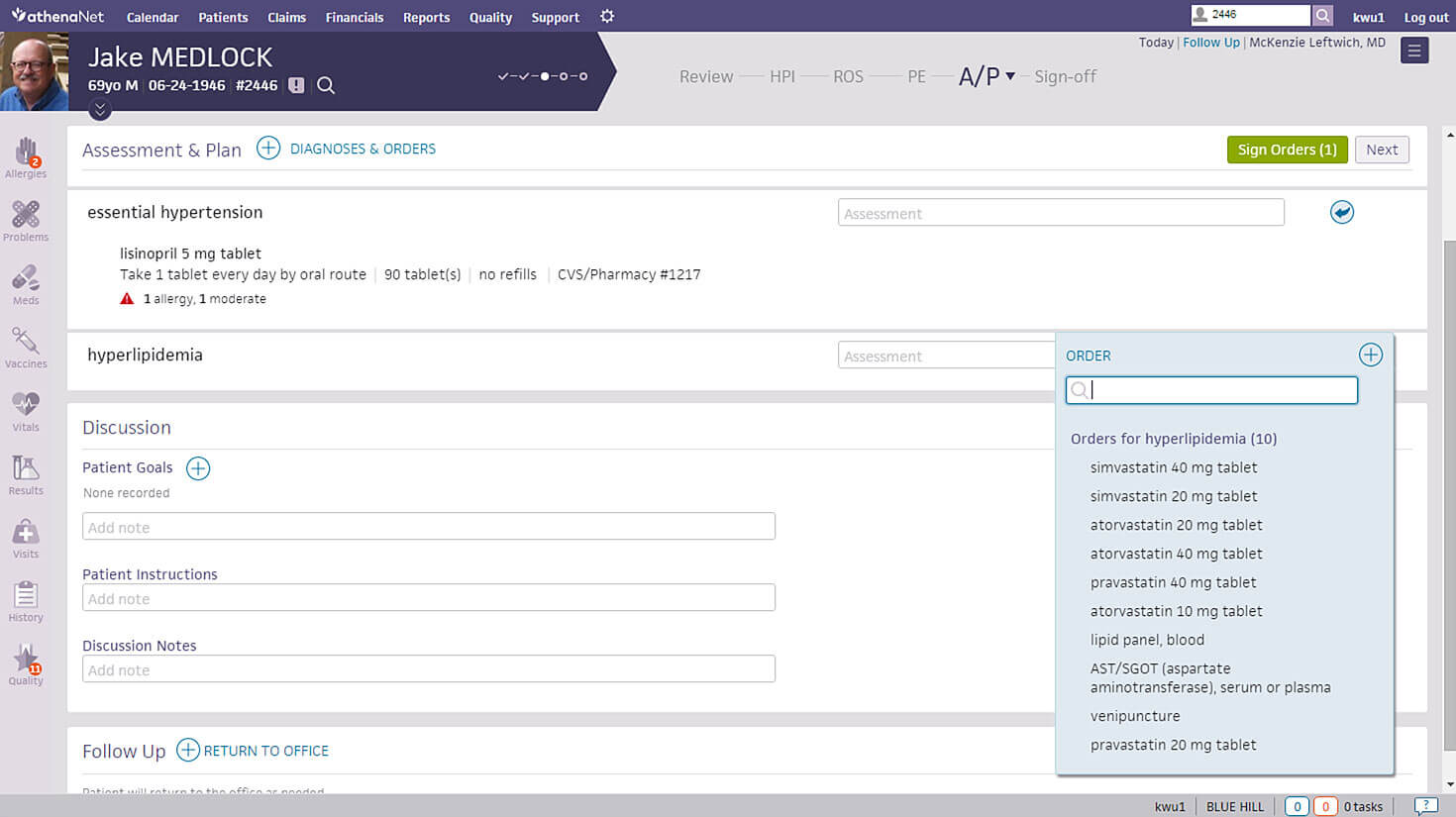-
Best Allergy & Immunology EMR Software Buyer's Guide 2025
 Dec 12, 2025150
Dec 12, 2025150What is an Allergy & Immunology EMR Software? Allergic and Immunology related diseases are the hypersensitive reaction of individual immune systems to elements in their surroundings. While most allergic reactions can be moderate, some can be fatal if not tackled immediately. An Electronic Medical Records Software (EMR) designed especially for allergy specific will have features most common to this medical discipline. Treatment planning, pulmonary function tests, laboratory results, prescr
-
The Best Gastroenterology EMR and Buyer's Guide 2025
 Dec 09, 2025172
Dec 09, 2025172What is Gastroenterology EHR Software? Gastroenterology is a medical specialization focused on the digestive system and its accompanying functions, which include the organs from the mouth to the anus. Due to the multiple organs and functions on review, a gastroenterologist needs tools specific to their specialization to make every day functioning smooth, as well as efficient. There is countless Electronic Medical Records (EMR) software in the market but only a few that offer specialization-s
-
Best Ob-Gyn EMR Software Buyer's Guide 2025
 Dec 08, 2025181
Dec 08, 2025181What is Ob-Gyn EHR Software? Obstetrics and gynecology (OB-GYN) is the only specialty where doctors may have to deal with two patients, not one. Sometimes doctors must take care of a mother’s health and her child’s. Not all pregnancies are the same, and because of each patient's challenges, it makes sense that OB-GYN specialists would need specialty-specific EMR software (OB-GYN EMR software) to better manage their practice. Features of OB/GYN EMR Software There are some features uniq
-
With over 600 EMR Software Companies, it is not easy to find the right one.
Talk to an EMR Software Expert! -
The Best Free EMR & PM Software and Buyer's Guide 2025
 Dec 09, 2025137
Dec 09, 2025137What is a Free EMR Software? Free EMR software reduces the costs of going paperless for medical practice. Free EMR software offers the core EMR features of charting, decision support, and coding assistance which is critical for the workflows of your practice. Free EMR Software doesn’t mean that it lacks functionality because it’s free of cost. However, the catch here is that there are certain limitations that should be kept in mind. These include free solutions that can be used by a limite
-
Best Telemedicine EMR & PM Software Buyer's Guide 2025
 Dec 12, 2025152
Dec 12, 2025152What is Telemedicine EHR Software? Telemedicine Electronic Health Records (EHR) Software utilizes telecommunications technology to enable caregivers and patients to connect and interact remotely. Through the telemedicine platform, clinicians, physicians, and doctors can evaluate, diagnose, and provide quick treatment plans to patients. Telemedicine EMR System technology is utilized to deliver effective clinical services to patients, including follow-up visits, medication management, remo
-
Best Physical Therapy EMR Software Buyer's Guide 2025
 Dec 12, 2025209
Dec 12, 2025209What Is Physical Therapy EHR Software? Physical therapy EMR System requires tools for a long-term treatment solution that can track patient progress and the effects of a new methodology or prescription drugs that are recommended. Physical therapy EMR Software relies heavily on patient treatment schedules and electronic health records software that can assist in building treatment plans that would also be a boon to those practicing the medical discipline. Features Of Physical Therapy EMR Sof
-
With over 600 EMR Software Companies, it is not easy to find the right one.
Talk to an EMR Software Expert! -
Best Patient Engagement EMR Software Buyer's Guide 2025
 Dec 08, 2025269
Dec 08, 2025269What Is Patient Engagement EMR Software? Patient Engagement EMR software is essential for running a successful healthcare practice. It can range from using patient portals, which allow patients to safely interact with physicians using Practice Management (PM ) Software, to contact between providers and patients via alternative channels such as secure messaging and emailing. Patient Engagement Electronic Medical Records (EMR) software allows physicians to connect with patients, manage patie
-
Best Patient Portal EMR Software Buyer's Guide 2025
 Dec 12, 2025222
Dec 12, 2025222What Is Patient Portal EMR Software? Patient portal EMR software provides patients with 24-hour access to physician communication, health information, appointment scheduling, and many other services. A patient portal is a secure website that works alongside Electronic Health Records (EHR) or Electronic Medical Records (EMR) software. Patient portals EMR Software offer several tools and features that conveniently enable practitioners to complete typical patient-related duties. These Patient Po
-
Best Dermatology EMR Software Buyer's Guide 2025
 Dec 09, 2025175
Dec 09, 2025175What is Dermatology EHR Software? There are over hundreds of Dermatology Electronic Medical Records Software (EMR) vendors in the market to choose from, a staggering number for medical practices, especially dermatologists. This guide should help you narrow down the field and select the EMR software right for your practice. Dermatologists specialize in treating skin conditions. The bulk of their recording is lab and image tests so patient records need to be kept up to date. Paper records are
-
With over 600 EMR Software Companies, it is not easy to find the right one.
Talk to an EMR Software Expert!




















